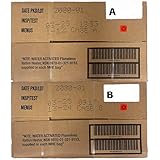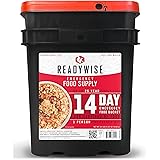Assessing Your Current Situation
Understanding Your Food Needs
So, the first thing I did when thinking about growing my own food was to really take a look at what my family eats on a regular basis. This might sound a bit obvious, but let me tell you, doing this helps a lot! I started jotting down our favorite meals and what ingredients I used the most. Doing this just makes things so much smoother in the long run.
Once I had my list, I realized that I could easily grow a good chunk of what we consume. From tomatoes to lettuce and even some herbs, it all clicked! Plus, knowing what we eat the most helps me plan a productive garden that caters to my family’s taste.
At the end of the day, you should think about what your family enjoys eating, because there’s no point in growing something nobody likes. Trust me, the moment you start seeing those little seedlings sprout, you’ll want to be excited about the dishes you can whip up!
Space Considerations
Now, here’s the thing: I had to really assess my available space. Do I have a backyard? A balcony? Or maybe just a sunny windowsill? Depending on your living situation, your options for growing food can vary widely. I’ve seen folks create amazing little garden setups in even the smallest spaces!
Once I figured out my space, I got kinda creative with how I could use it. If you’ve got a tiny patio, vertical gardening can be a lifesaver. Stack those planters and grow upwards! There’s something so satisfying about seeing your mini jungle sprout, even if it’s just a couple of pots.
So take an inventory of your space and think outside the box. Don’t let a little limitation hold you back from growing your own food.
Time Commitment
Let’s talk about time, because honestly, this one’s a big factor. When I first dived into gardening, I had to consider how much time I could dedicate to it weekly. Each plant has its upkeep, and knowing your limits can really save you some headaches later on.
In the beginning, I spent a lot of time researching which crops were low-maintenance but still gave a good yield. Leafy greens, herbs, and radishes became my go-to choices, as they didn’t require a ton of work and offered quick rewards.
== > What if ... Get a FREE Subscription to PREPARE
Realistically, I recommend setting aside some time for hands-on learning. Gardening is a journey, and trust me, the more you put into it, the more you’ll get out of it!
Setting Clear Goals
Short-Term vs. Long-Term Goals
Next up: setting goals. At first, I was just pumped to grow anything, but soon I realized I needed to clarify what I wanted to achieve. Was I looking for that instant gratification of a few herbs, or was I aiming for an entire year’s worth of veggies?
Start by dreaming big but keeping it realistic. I began with small goals, like successfully growing cherry tomatoes in my first summer. Once I nailed that, I felt inspired to expand bigger with each garden season. It’s all about that initial success!
Long-term goals can be pretty exciting too! Maybe you’ll start with herbs, but in a few years, you’ll be looking at setting up a small fruit orchard in your yard. Keep dreaming, and don’t hesitate to revise your goals as you grow—literally!
Budgeting for Your Garden
Let’s keep it real for a second. Growing your own food costs money upfront. I learned quickly that planning a budget for seeds, soil, and supplies is essential. You want to set yourself up for success without breaking the bank!
To save on costs, I started by using kitchen scraps to grow new plants, like green onion roots and potato eyes. It’s such a cool way to recycle and save some bucks!
Also, keep an eye out for local gardening groups where you can share seeds and supplies with others. Gardening can be a community effort, and it’s a great way to connect while keeping costs down.
Planning Your Planting Schedule
As I got comfortable, I became a bit of a plant nerd—totally embracing the idea of seasonal planting. Knowing when to plant what will save you a ton of headaches. I started with a calendar and noted when each crop should be sown.
This became my gardening bible! Different crops have different needs and timing; I no longer have to stress about when to start those pumpkins. Instead, I just peeked at my calendar, and boom—pumpkin party!
Plus, it gives you the opportunity to plan out your harvests, making it easier to enjoy your produce at peak freshness. Trust me; nothing beats a fresh tomato plucked straight from your own backyard!
Staying Educated and Inspired
Researching Best Practices
The world of gardening is rich with resources, and I can’t stress enough how beneficial it is to stay educated. I dove into books, blogs, and videos about planting techniques, pest management, and organic options. Every bit of knowledge I gained just fueled my passion more.
Connecting with seasoned gardeners can be an amazing way to learn too. Joining local gardening clubs or online forums was a total game-changer for me. Nothing beats chatting with fellow plant nerds, sharing tips, and maybe even trading seeds!
Remember, every gardener started somewhere, and it’s all about sharing that journey. So don’t hesitate to dive deep into research; your plants will thank you for it!
Finding Inspiration from Other Gardeners
Besides researching, I loved browsing social media and YouTube for gardening inspiration. I found many gardeners who shared amazing stories and creative ideas. There’s just something inspiring about seeing others succeed!
From container gardening tips to lifting your spirits with a flourishing greenhouse, these platforms opened up a new world for me. The enthusiasm is contagious!
Make sure to engage with these communities; I’ve made friends, learned techniques, and celebrated bountiful harvests together with folks from all walks of life. It only adds to the joy of growing your own food!
Embracing the Journey
Finally, I’d say it’s all about embracing the journey of growing your own food. It’s not always going to be rainbows and sunshine; there will be setbacks and challenges too. I remember a time when pests entirely devastated one of my tomato plants, and I felt crushed!
But through that experience, I learned to problem-solve—trying out companion planting and different organic solutions—and, win or lose, I grew along with my plants. It’s all part of the adventure!
So, enjoy the process! Take joy in the little victories whether it’s the first few leaves sprouting or a bountiful harvest. Each step in this journey enhances your self-reliance, and I promise, you’ll get better with time!
FAQs about Growing Your Own Food for Self-Reliance
1. How do I know what to plant first?
Start by assessing your family’s eating habits. List out the veggies and herbs you frequently use, then look into which ones are easiest to grow in your area based on your available space.
2. Can I grow food if I have limited space?
Absolutely! Use containers or vertical gardening techniques to maximize your space. Many plants grow well in pots, so don’t let a tiny balcony discourage you!
3. How much time should I expect to spend gardening?
It varies! Initially, you’ll spend more time learning, but after your garden is set up, it can be just a few hours each week. Start small, and it will get easier as your skills develop.
4. What’s the best source of information for beginners?
Books, gardening blogs, and even YouTube channels from experienced gardeners can be super helpful! Joining local gardening groups can also provide a wealth of knowledge and support.
5. What should I do if my plants get infested with pests?
Don’t panic! Start by identifying the pests and researching organic solutions. You can use companion planting or organic sprays to manage infestations without using harsh chemicals.






